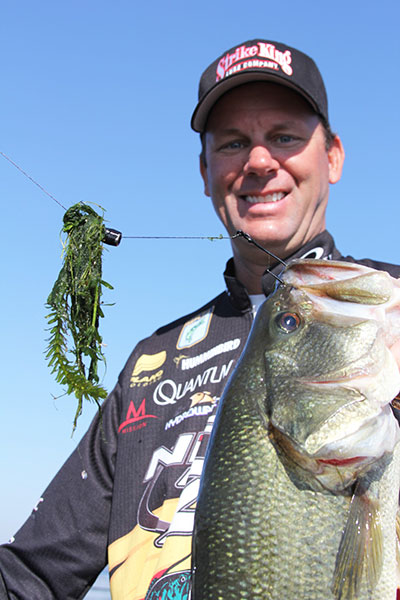By Kevin VanDam
(This is the first of a two part series on how Kevin VanDam stocks his terminal tackle boxes.)
 Are You Properly Stocked with Sinkers?
Are You Properly Stocked with Sinkers?
Do you have an adequate supply of sinkers for the upcoming season? Inventory your terminal tackle before spring!
Shop the bargains at sport shows, local tackle shops and tackle catalogs.
Sure you have new baits on the mind, but don’t overlook terminal tackle that often gets depleted throughout the year.
Perhaps the most overlooked item is your sinkers and weights. If you’re like me, you go through a lot of those during the year and they are easy to overlook.
Before I outline the different types of weights I carry, it should be noted that I store them in a waterproof Plano Stowaway utility box. It’s not only waterproof, but has three latches to keep the box sealed. With that much weight in one box, you need additional latches to keep the contents secure, especially when stored in a boat locker.
I carry very few lead weights and prefer tungsten because it is denser, smaller, and transmits sound when dragged or banged on hard bottoms. This not only gives me better feel, but it creates a clicking noise that arouses fishes’ curiosity.
Tungsten also can improve hook-ups. When bass get lead sinkers in their “teeth,” it tends to stick. With tungsten, you can pull the weight through the mouth more smoothly and create better hook penetration.
Strike King’s Tour Grade Tungsten weights have a polished hole that won’t wear your line and they come in a variety of colors to match your lures.
The Tour Grades also includes some special in-between sizes from 1/8 to 3 ounces. Two of my favorites, 5/16 and 5/8 ounce, are difficult to find in other brand of tungsten sinkers.
I use the tungsten Carolina weight for open water I prefer bullet style weights in grass because it comes through easier.
The Tour Grade Tungsten drop-shot sinkers are tear-drop shaped which also come through cover better than ball-shaped drop-shot sinkers. Strike King also has larger ½ and ¾ ounce sizes that are ideal for fishing deep in the Great Lakes or in heavy current.
In most cases, though, I use as light as I can get away with providing it allows me to keep a tight line. When fishing around grass or shallow structure, I don’t like to overpower the bait with my weight.
Now, I still carry a few of the Bass Pro Shops’ lead cylindrical sinkers for drop-shotting. They not only come through grass well, but I can adjust the weight by trimming them with side cutters, something you can’t do with tungsten.
I also carry Strike King’s Tungsten Slither (skirted) Rigs for punching in grass. I can attach the hook of my choice based upon the size of plastics I plan to use, and the rig comes through grass better than a standard jig.
I also pack the Tungsten Swinging Football Heads for much the same versatility reasons; I can change hook sizes based upon the size of baits I want to add to the head.
Other weight-related items I carry are Storm SuspenDots and Strips for adding weight to hard baits to get them deeper or make them suspend; Bass Pro Shops Fly Tying wire for wrapping on wacky-rigged hooks; an assortment of steel penny nails and tungsten nail weights to place in plastics for Neko rigging; and a small, Gremlin assortment split-shot pack that I can crimp on a hook shaft for special situations.
Remember, you’ll be a better angler when you’re prepared for each situation, and the weight you choose often can determine make a difference in whether a finicky bass decides to bite.


